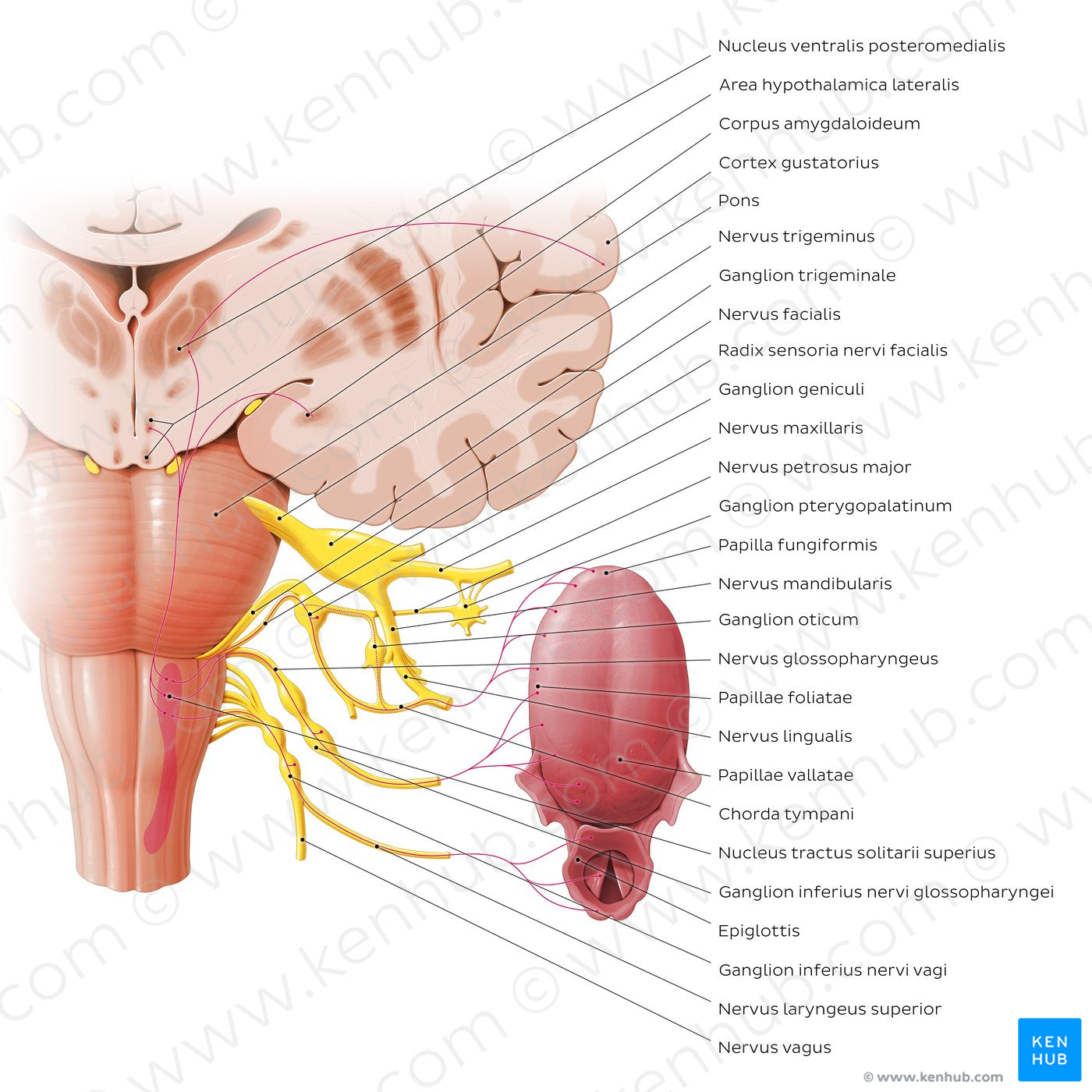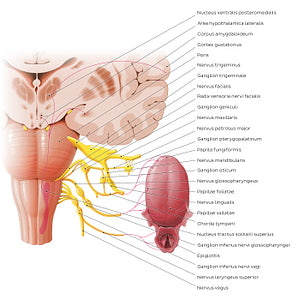Paul Kim
Taste pathway (Latin)
Taste pathway (Latin)
The taste sensation from taste buds of the anterior two thirds of the tongue (papillae fungiformes and foliatae), travels via the chorda tympani of the n. facialis. Additionally, the n. petrosus major (branch of n. facialis) supplies the taste buds on the palatum molle. The cell bodies of these neurons are located in the ganglion geniculi and continue towards the truncus encephali as the radix sensoria nervi facialis, also known as the n. intermedius. Taste sensation from the posterior third of the tongue is carried by the ramus lingualis nervi glossopharyngei; the cell bodies of these neurons are located in the ganglion inferius nervi glossopharyngei. Taste sensation from the laryngeal surface of the epiglottis is carried by the n. laryngeus superior (branch of n. vagus); cell bodies of these neurons are located in the ganglion inferius nervi vagi. Upon entering the truncus encephali, the central processes of gustatory neurons of the n. facialis, n. glossopharyngeus and n. vagus form the tractus solitarius and synapse in the rostral third of the nucleus tractus solitarii in the medulla oblongata. Second-order neurons then ascend via three pathways. The majority of the fibers go on to synapse in the ncl. ventralis posteromedialis of the thalamus and synapse with third-order neurons destined for the insula for interpretation of taste. The second set of fibers travel to the zona hypothalamica lateralis, which is involved in appetite and satiety mechanisms. Other fibers pass to the amygdala, which is involved in emotions and memory formation in relation to food.
Precio habitual
$7.56 USD
Precio habitual
Precio de oferta
$7.56 USD
Precio unitario
por
No se pudo cargar la disponibilidad de retiro


#F6D12C
#A26056
#632A23
#5B3527
#FEE637 y #D2B4AA

